This is your beginners guide to fly rods! Learn all about fly fishing rods including their length, action, flex, brand recommendations, and more.
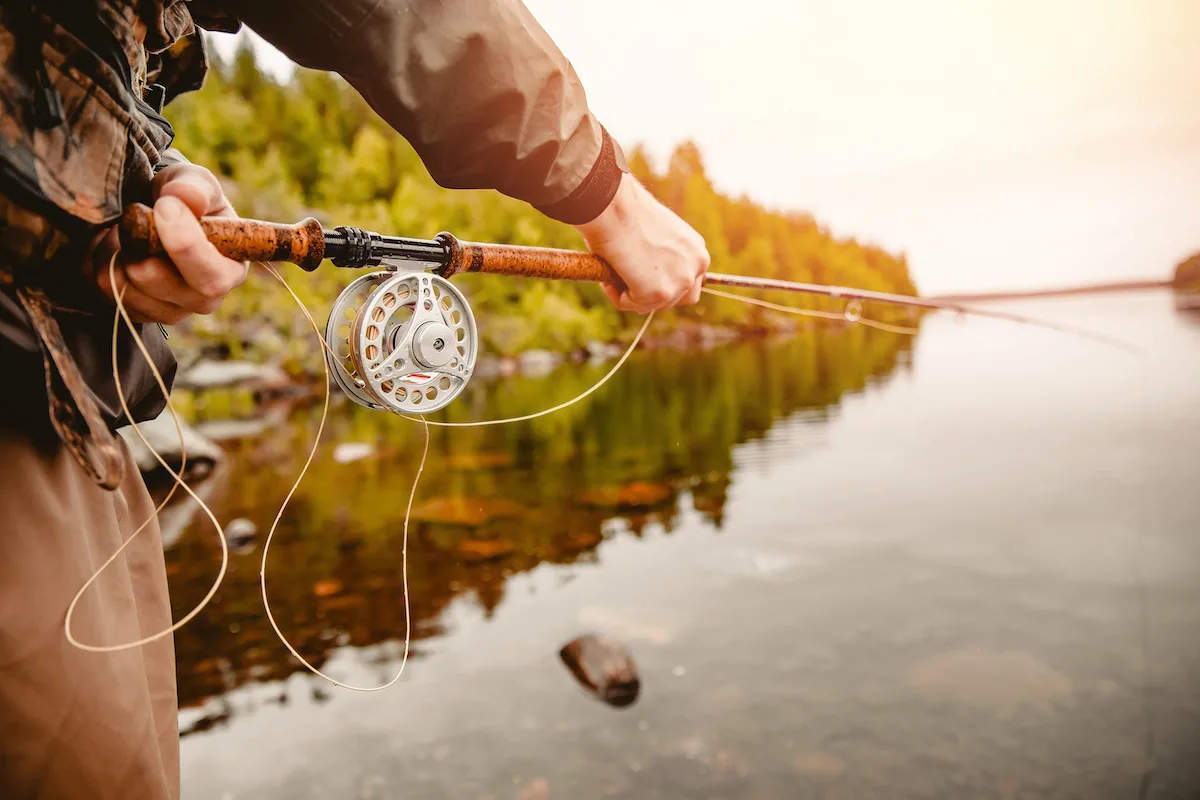
Why are fly rods so important in fly fishing? Because the whole goal is to present a fly the fish wants to eat. Presenting your fly in a manner that makes the fish think it looks natural is the trick to catching a fish. From the way it lands on the water to the way it floats towards them, all of that is connected to the gear we are using.
With that in mind, let’s reverse engineer the thought process. Deciding which fly rod to purchase and use comes after deciding what flies you need to fish, and which weight and style of line will cast those flies the best.
As you might imagine, there is not one rod that will be perfect for every situation. Maybe for those of us that love acquiring new fly rods, that is a good thing!
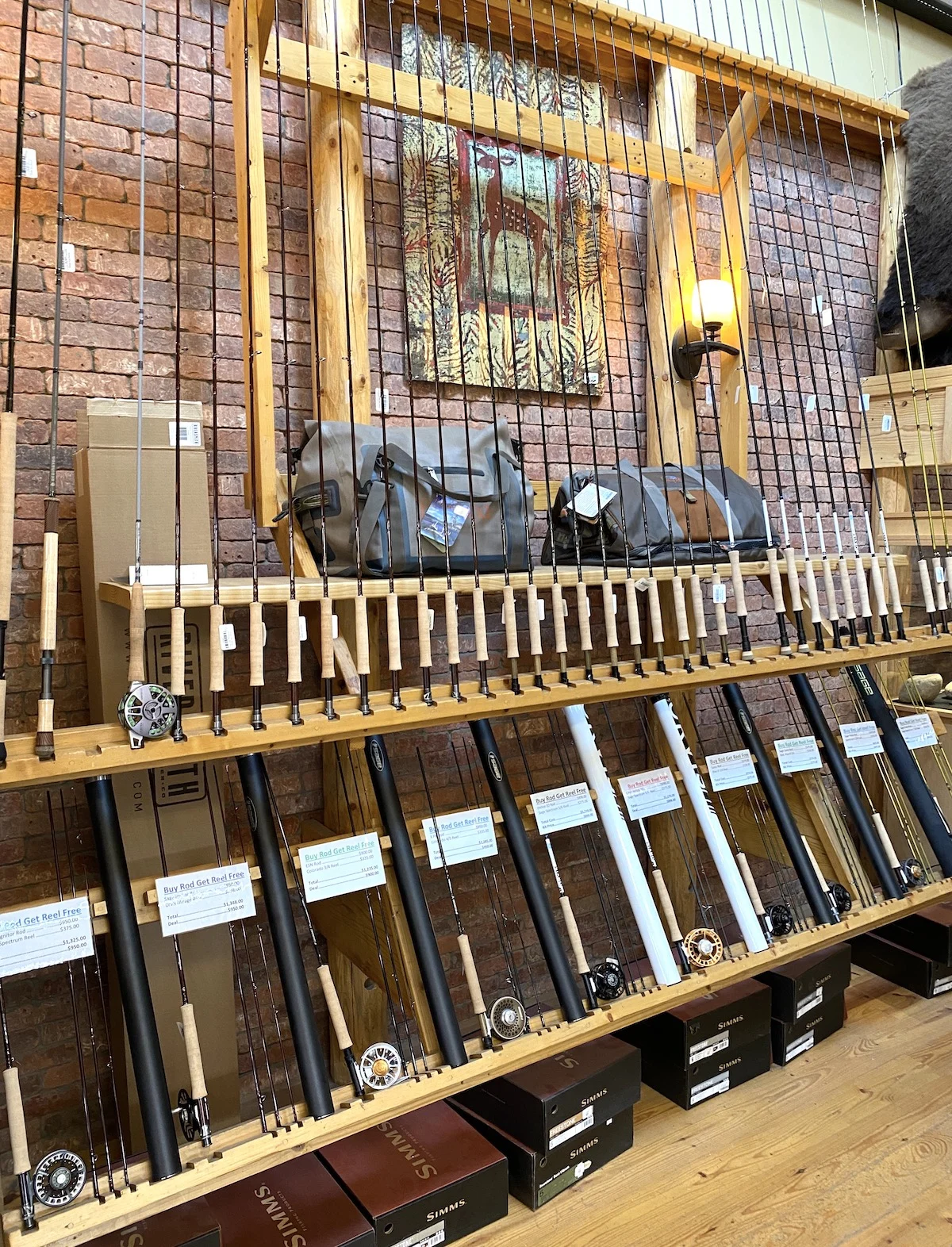
Guide to Fly Rods
Instead of trying to present an unbiased perspective on which rods to choose, I believe it’s more important for a beginner to first learn the different types of fly rods. I’ll present some options that are both financially accessible as well as have the best reviews for that position they occupy. It is very unlikely you will have to worry about purchasing a fly rod you’ll be able to outperform.
The key things to understand and evaluate when choosing a fly rod are: budget, weight, length, action, flex, 4-piece or 2-piece, and construction. I’ll go over each below.
What to Spend on a Fly Rod
There are varying opinions on what kind of investment should go into a first fly rod. Again, it is very likely a new fly fisherman won’t be able to outfish a fly rod. In the early years of learning the sport, there is no reason to spend premium pricing on a rod.
What you should be looking for is a long term warranty to protect your investment. At some point you are going to watch your buddy close the tailgate on his favorite rod, and who they bought it from will determine how many tears are shed.
These companies are amongst the manufacturers known to offer good coverage: Echo, TFO, Edge, G Loomis, Sage, and St. Croix.
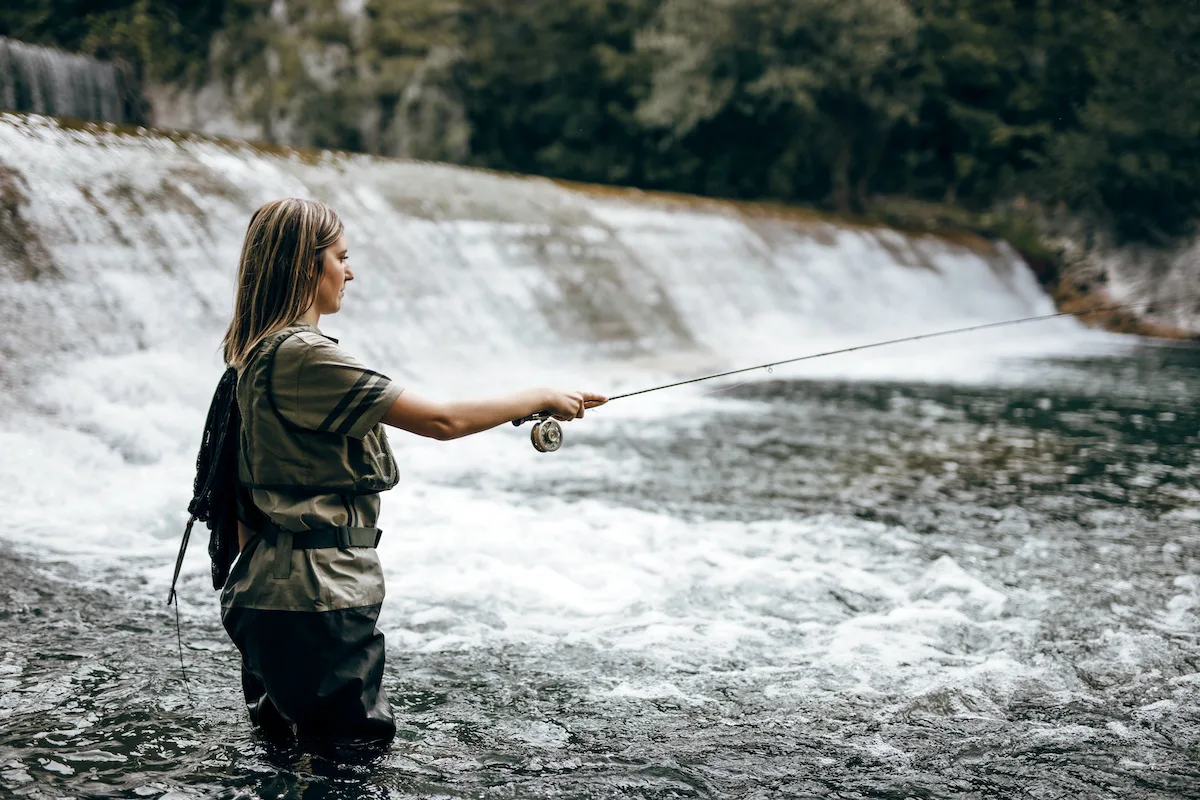
Selecting Your Fly Rod Weight
More than likely, you are going to start with a 9-foot, 5-weight rod as your “Leatherman” of fly fishing. However, there are lots of options to incorporate with time. This is a great article specific to fly rod weights.
Which Length Rod to Use
After your first time bushwacking down to the river bank, line tangled in the brush, trying your best not to break your rod, you might wish fly rods were extendable. Unfortunately, that doesn’t exist yet.
Even though rod lengths range from 7 to over 14 ft, for trout fishing you will be looking for a 8.5 to 9 foot rod. There are techniques and types of fish that require a longer rod, but you will be happy with the versatility of the 9 ft length.
There are definitely some benefits to longer rods which allow for better overall line management. You will find you are able to mend line and have better overall drifts.
If you like to fish with longer leaders, you will appreciate a longer rod for control. As the Euro Nymphing technique becomes increasingly popular, there are more options for fly rods in the longer lengths.
A shorter rod will definitely cut through windy conditions better, but they aren’t able to absorb the torque on lighter tippets as well as longer rods. Most people would agree that you get a little more control on larger fish with a shorter rod.
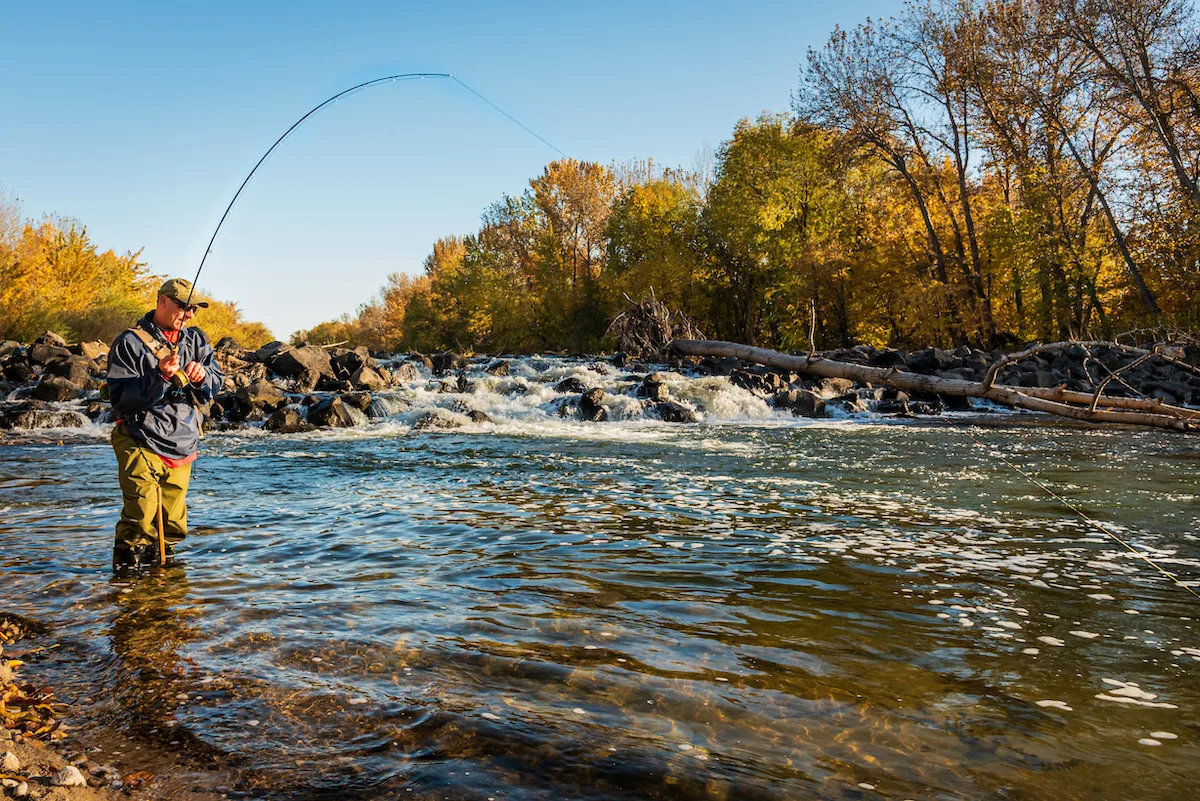
What is Fly Rod Action?
The easiest way to explain action is that it is the way a rod will bend or flex. Maybe not exactly the bend or flex itself, but the return from the flex (fast or slow) that is the action. It is the action that a fisherman feels and translates into the performance.
Fast Action
This is the action you want when the wind is not cooperating, and is also generally associated with “power”. A fast action is usually not the first rod recommended when beginning fly fishing. The action is “fast,” and the casting cadence is a little quicker because of it.
To describe the action, the general performance of the rod is that the top of the rod will flex more than the bottom or butt. Usually, an experienced fisherman can get more distance out of a fast action rod.
Medium Action
As a beginner, you will most likely start with a medium action rod that has its flex point in the middle. Medium action is considered the most versatile of the rods. You can throw bigger flies and still work on presentation at the same times. Note the pros/cons of slow and fast action rods, and then mitigate some of those through a medium action rod.
Soft Action
A soft action rod is going to feel just that . . . soft. It will allow you to present flies more delicately on the water with a little more control. They are also better with short distances, and generally struggle at long casts.
When you watch a fisherman with good “touch,” you are likely watching a soft action rod. Think small flies, picky fish that don’t want the line slapping the water. If you want to feel like you have a magic wand in your hand, it will most likely be a soft action rod.

What is Rod Flex?
While flex might not be the first thing we think about when choosing our first fly rod, it’s still important. The flex of a rod generally refers to how much the rod bends during a cast. Flex covers the entire length of the rod from the butt to the tip. Understanding the flex versus the action of a fly rod can be tricky at first. Here is a quick breakdown of the three primary flex constructions.
Tip-Flex
This refers to a rod that only flexes in the top or first third. The reason for this flex construction is to have a stiffer or stronger strength to the cast. This allows for big bugs to be tossed and a quicker overall cadence to your cast. This is also the right flex for when the wind picks up.
Mid-Flex
This refers to a rod that flexes from the top down to the halfway point. Like anything labeled as “mid”, this flex will be more general and apply to a wider range of fishing techniques. You can imagine a mid-flex, medium action, 5 weight rod to be a total Swiss Army knife of fly rods.
Full-Flex
This refers to a rod that flexes throughout the entire rod, all the way down to the grip. This flex type requires a strong ability to cast a rod. The rod will do all the work if you let it, and will actually be a pain if you try to force or muscle it.
If you are trying to be more delicate with your presentation or have closer casts, a full-flex rod could be your tool. They have a nice traditional motion for lighter tippets and smaller flies.
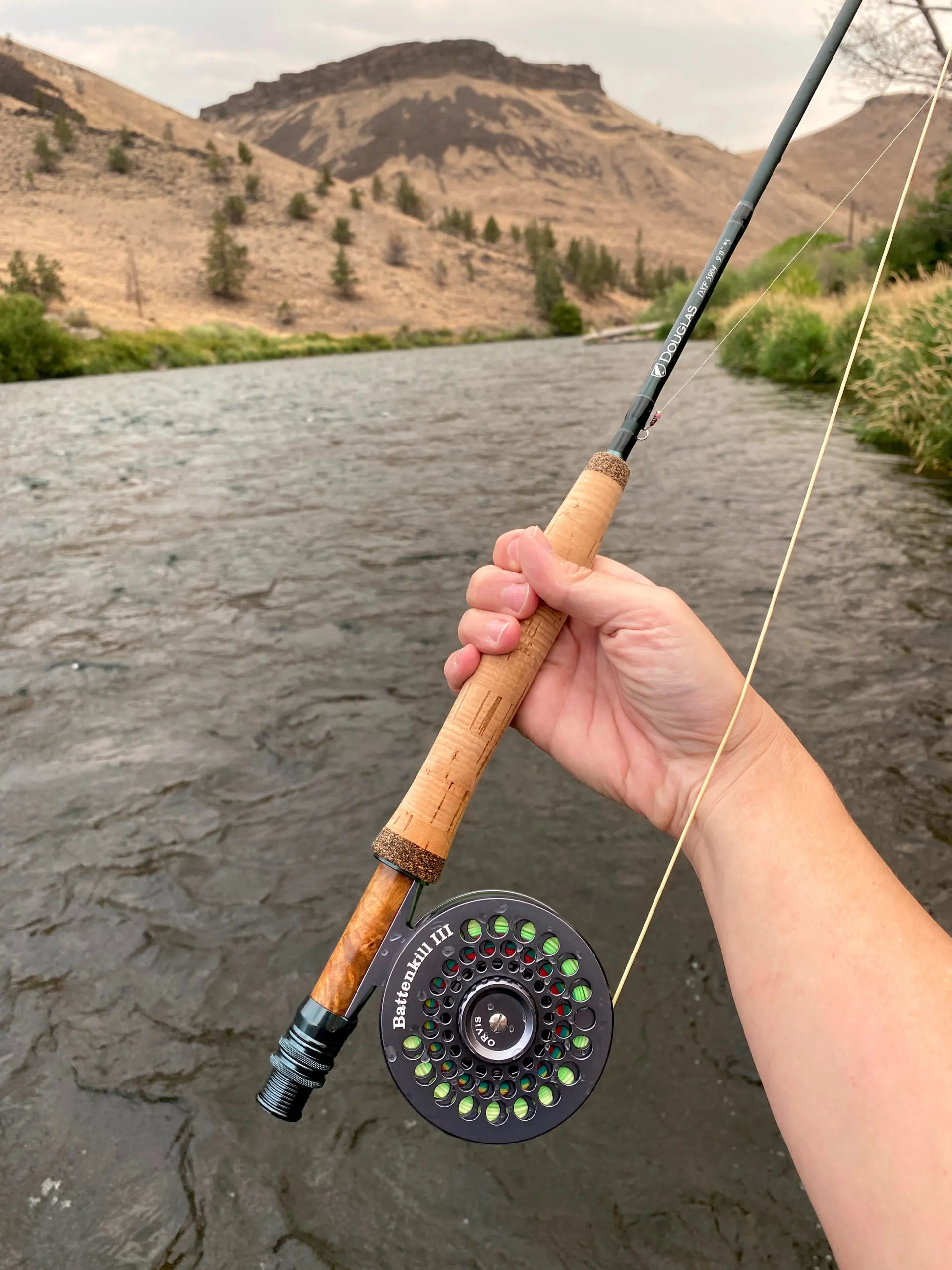
Four-Piece or Two-Piece Rod?
In reality you have more choices than just two or four-piece rods, but generally it is a choice between the two. There are construction and material advantages to both. Just remember, you are going to want to travel with your rod at some point.
A four-piece rod will make an easy carry-on (like ski boots, better to keep them with you), or it will pack in most large checked bags. Sage, Scott, and G-Loomis all pass great rod technology on to the consumer in a four-piece that packs up nicely.
Which construction materials should I look for?
It’s fun to see the old bamboo and steel fly rods hanging on the walls of your local fly shop. It’s a good reminder that folks were still catching big fish on the regular without the modern materials of today. Almost like we overthink it!
It’s sort of like seeing pictures of women decades ago climbing mountains in dresses, and then seeing the same mountain climbed in performance fabrics. Big difference, right?
Back in the day you could find rods in bamboo, steel, boron, etc. – but today’s rods generally fall into three material constructions: Graphite, Bamboo, and Fiberglass.
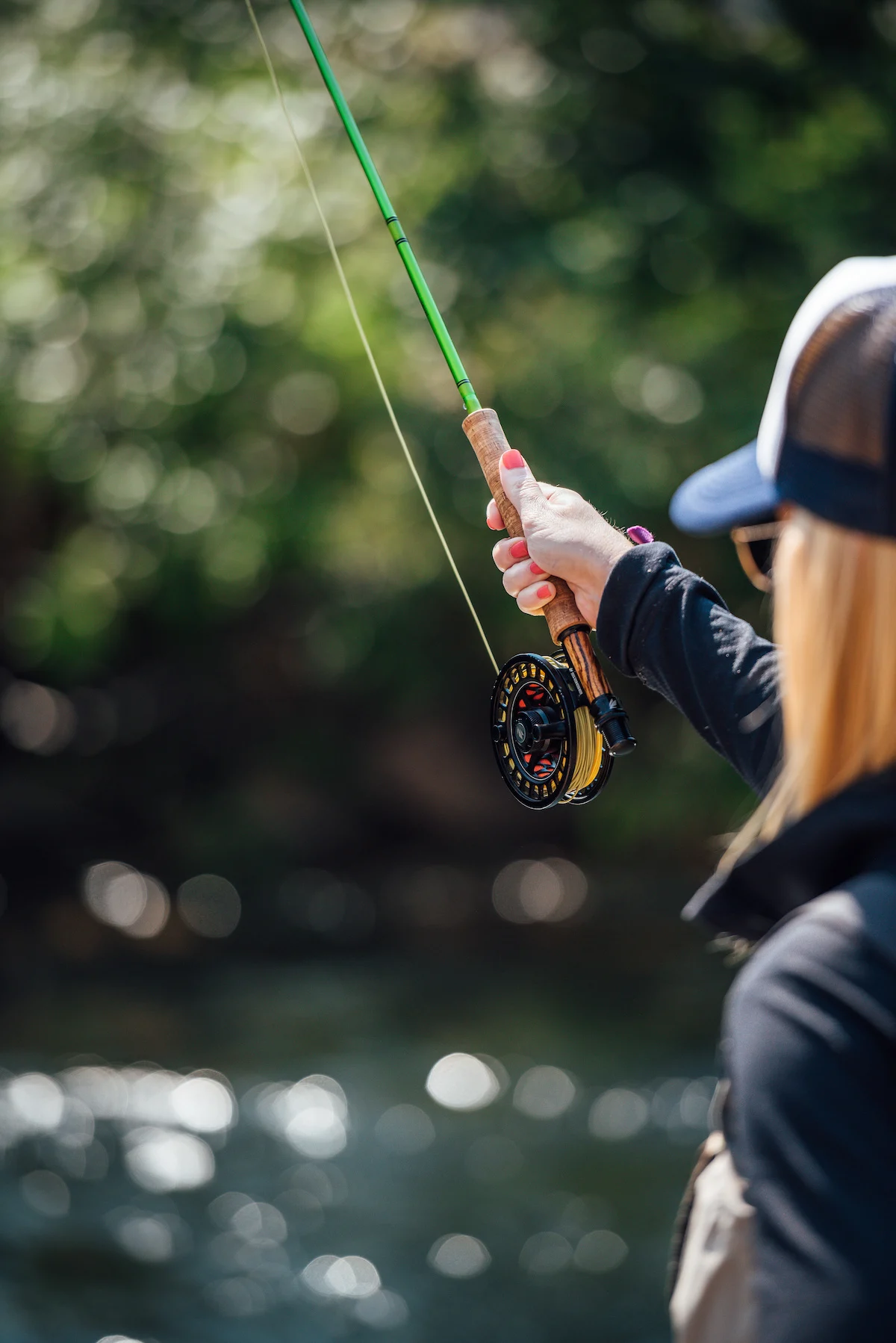
Graphite
Generally called carbon graphite, these rods are the main standard today. They provide strength and sensitivity while maintaining a very high performance level. Based on experience, they are very durable while being forgiving at the same time.
Other adaptations to the current graphite rod included incorporating nano silica or even boron into the graphite to lighten the rod and increase feel or sensitivity for the fisherman or woman.
Bamboo
This is referred to as a cane pole or split bamboo. It’s fair to say that when fly fisherman have acquired all the graphite rods they could ever fish in a lifetime, they generally move into the craftsmanship of bamboo rod.
It’s the purist that wants the classic light and slow casts. The rod itself can feel a little heavier in your hand. If you desire a bamboo rod, be prepared: a nice cane rod is going to stretch the budget.
Fiberglass
This material is getting a little harder to find these days, but at the same time there is a bit of a resurgence. Funny how that happens as we appreciate tools and materials that were successful previously!
This material would be considered to fish better with a “slower” casting stroke in smaller water situations. The nice thing is that you don’t need as much room as a graphite rod to get the line loaded for your cast.
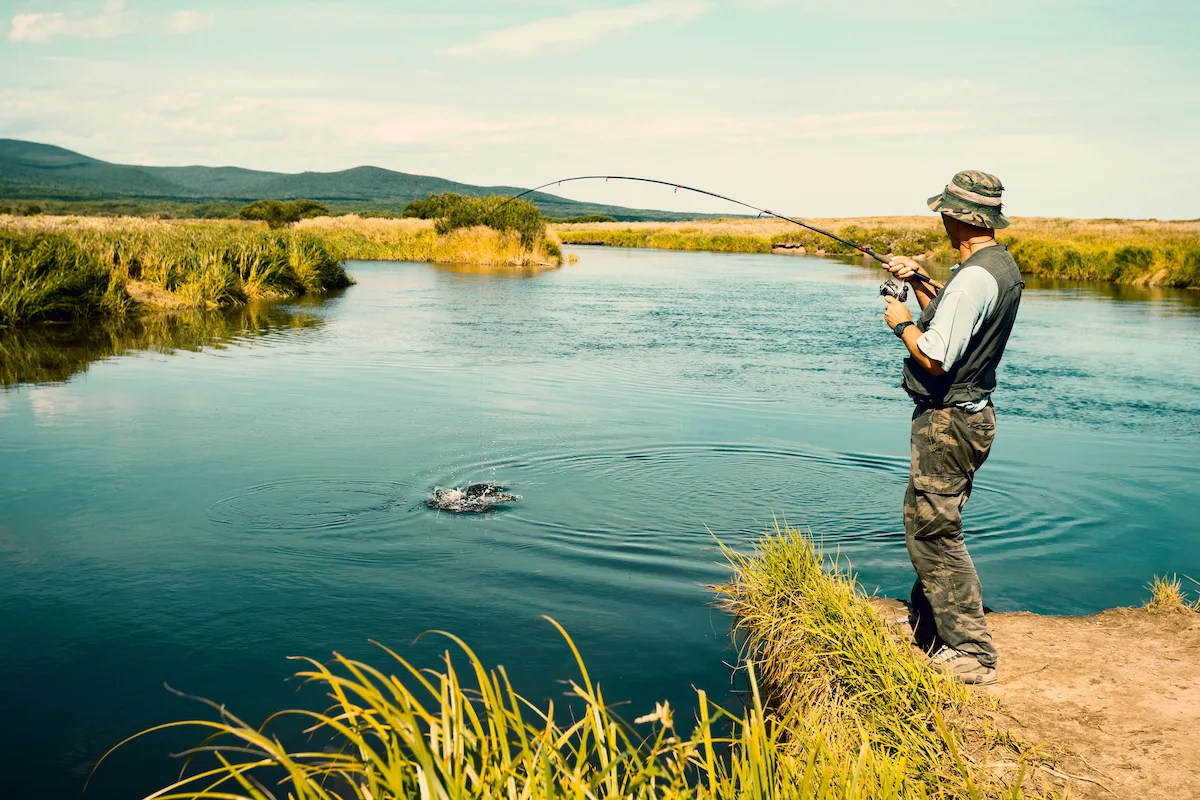
Which Brand Should I Buy?
Okay, so after everything you’ve learned, how do you decide what to buy? It really comes down to what feels right in your hand. How a certain rod matches the gear you are using and your technique or casting style can make all the difference.
Fly shops are great, but don’t let them steer you into a rod based on relationships they have with certain manufactures, or a rod they are trying to move from the shop. Make sure before you invest in a rod that you get a chance to demo it on either a casting pod, or even better . . . a river. If you need a place to start, here are a few rods to check out.
Best Overall
- Scott Sector Series
- Orvis Helios
- G Loomis NRX+
- Hardy Zephrus
- Sage X
Best Do It All
- G Loomis NRX+
- Scott Radian
- Fenwick Aetos
- Douglas Sky G
Best Budget
- Orvis Clearwater
- Temple Fork Outfitters Lefty Kreh
- Redington Vice
- Moonstone Drifter
Now that you’ve learned about fly rods using this guide, what do you think? Have you already demoed or purchased any rods? Do you have any questions? Let me know in the comments!
